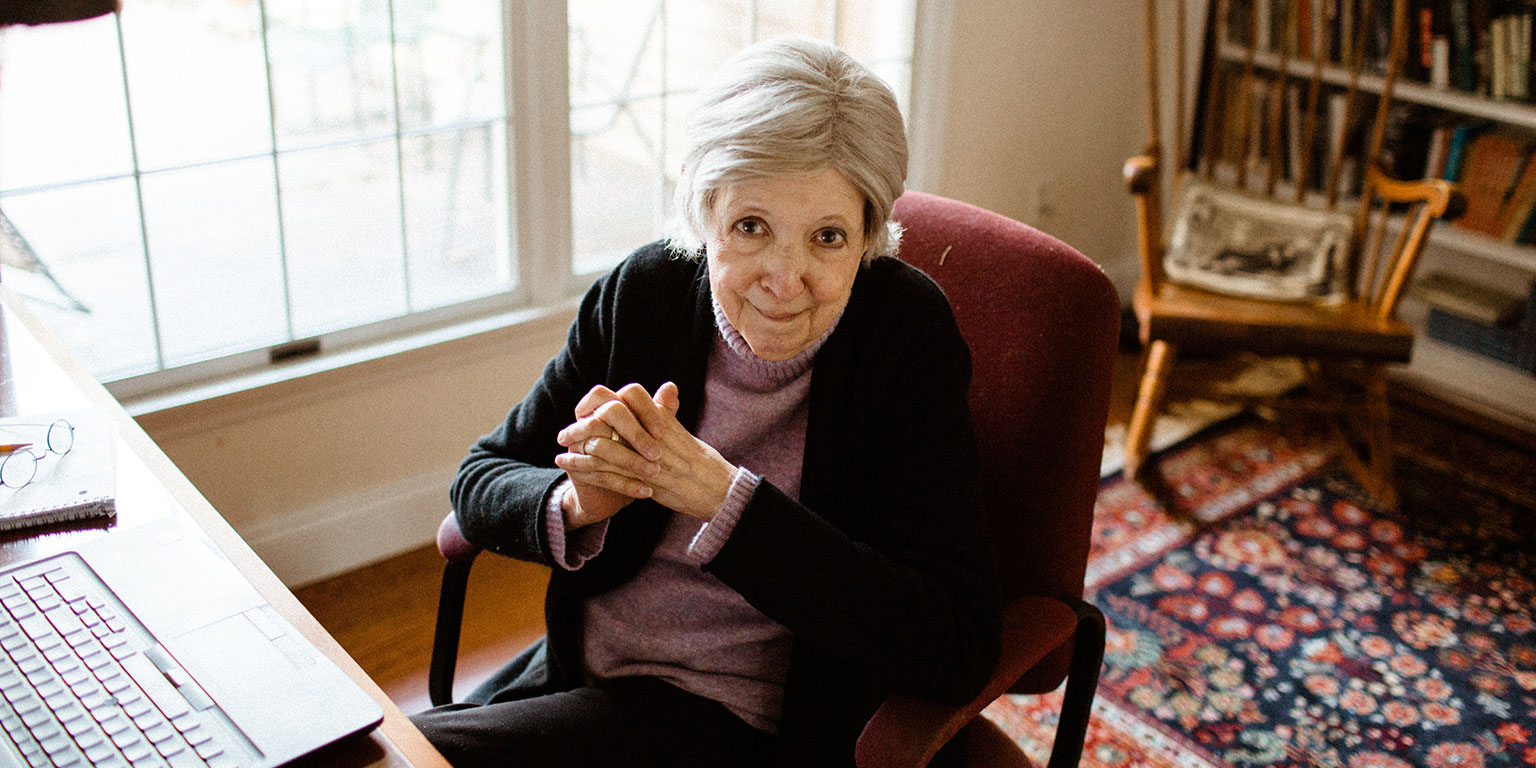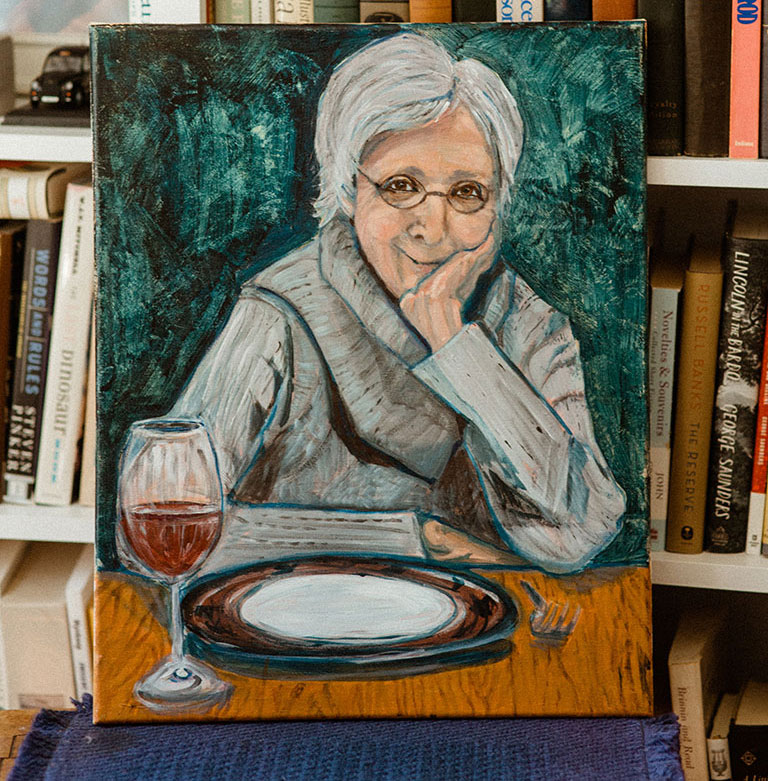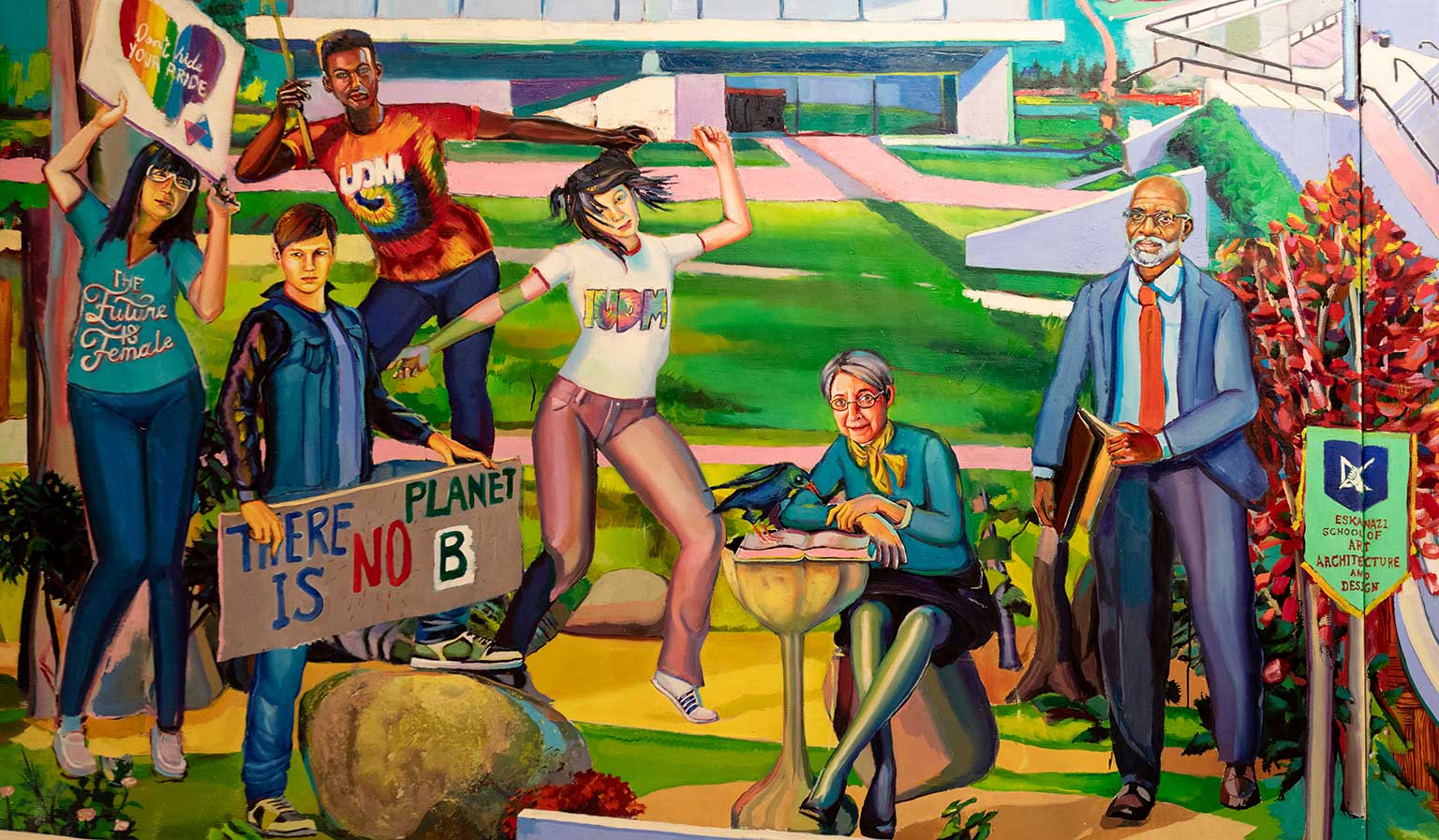By Ellen Kennedy Michel | Fall 2021
Photography by Sarah Kriner
To understand the impact Susan Gubar has had on our culture, it helps to imagine the United States in 1973, when she began her long career at Indiana University, hired as an “18th century person” with expertise in Alexander Pope and Jonathan Swift. At that time there was less than a handful of women on a faculty of 75 within the Department of English.
In 1973 “women’s liberation,” described as a radical new women’s movement, was gathering momentum from the 1960s. “Feminism,” a word met with skepticism and hostility, was entering common currency again after a first wave during the suffrage movement of the late 19th and early 20th centuries. Ms. magazine published its first issue in the spring of 1972, featuring a goddess on the cover with visible reproductive organs. Her many arms juggle an iron, steering wheel, mirror, phone, clock, dustmop, frying pan, and (at last) a typewriter.
It was both a thrilling and a trepidatious time to enter the profession. Fresh from earning a Ph.D. at the University of Iowa, Gubar brought a love of teaching — first discovered as a seventh-grade teacher in Spanish Harlem — to the College. She met Sandra M. Gilbert, another recent hire, on an elevator in Ballantine Hall.
Within months they were asked to design a course on the works of women writers, a “be careful what you ask for” moment in English studies. Gilbert and Gubar realized with some astonishment that they had never taken one, nor had they been offered classes led by women professors in any field. Feverishly constructing a syllabus for an undergraduate course they called “The Madwoman in the Attic” (referencing Bertha Mason in Charlotte Brontë’s Jane Eyre), they abandoned previous research projects to examine the 19th century literary imagination. After years as dutiful students who had been exposed to almost nothing about this particular body of work, they discovered women writers who felt subversive and complex, with criticism that tacitly derided them.
Developing the outlines of a proposed feminist poetics, the Madwoman course explored such themes as isolation, confinement, maternity, property, and self-expression. It situated Mary Shelley, the Brontë sisters, Emily Dickinson, Jane Austen, George Eliot and others in relation to the “fiercely patriarchal structure of Western society.” Examining the “underpinning of misogyny upon which that severe patriarchy has stood,” Gilbert and Gubar collected withering quotations to prove their case, assembling a chorus of male custodians of culture who expressed disdain for forms of women’s self-expression.
Even after Gilbert moved on to a new job in California, the collaborative fever continued. Communicating via costly long-distance phone calls, intense working rendezvous, and snail-mail drafts composed on the typewriter (while raising children and juggling other demands), they eventually produced the massive book published in 1979 by Yale University Press. You have to carefully study the introduction to determine which author wrote which chapter, so interwoven is their observant voice.
The rest is herstory. The Madwoman in the Attic: The Woman Writer and the Nineteenth Century Literary Imagination was recognized for breaking open literary studies. Women writers, and the feminist imagination, finally entered the classroom and commanded attention.








